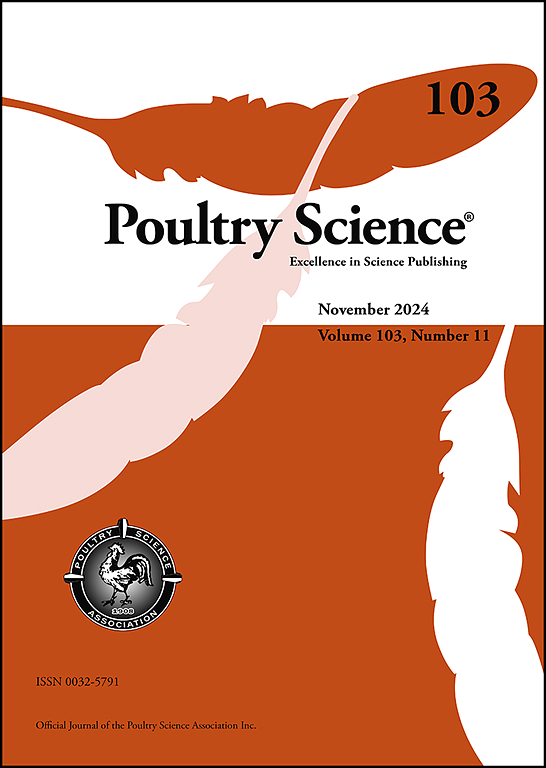Effects and health risk assessments of different spray disinfectants on microbial aerosols in chicken houses
IF 3.8
1区 农林科学
Q1 AGRICULTURE, DAIRY & ANIMAL SCIENCE
引用次数: 0
Abstract
This study aims to explore the effects of spray processes with four different disinfectants on airborne culturable and pathogenic microbial concentrations, microbial community compositions and health risk assessments in chicken houses. Results indicate that compared to the microbial concentrations before spraying, hypochlorous acid, glutaraldehyde-decamethonium bromide and sodium dichloroisocyanate increase culturable bacteria, culturable fungi, airborne Staphylococcus and Candida albicans, respectively. Beyond that, the spray processes with different disinfectants have no significant effects on the microbial concentrations. The total relative abundances (RAs) of the screened out 46 pathogenic bacterial genera decrease after spraying with povidone iodine, while increase after spraying with the other three disinfectants, which is opposite for the 35 pathogenic fungal genera. The core bacterial or fungal genera principally interrelate with each other through cooperation. Ammonia (NH3) concentrations, relative humidity (RH) and temperature (T) influence bacterial communities in aerosols; while fungal communities are mainly affected by T, particulate matters and nitrous oxide (N2O) concentrations. Long-term exposure to aerosols in chicken houses have potential adverse effects on human health and the spray processes with different disinfectants exacerbate the health risks of aerosols via inhalation. Hence, different spray disinfectants cannot significantly reduce the microbial aerosols in real chicken farm environments and the cleaning procedures should be comprehensively reviewed and optimized in livestock and poultry farms.
求助全文
约1分钟内获得全文
求助全文
来源期刊

Poultry Science
农林科学-奶制品与动物科学
CiteScore
7.60
自引率
15.90%
发文量
0
审稿时长
94 days
期刊介绍:
First self-published in 1921, Poultry Science is an internationally renowned monthly journal, known as the authoritative source for a broad range of poultry information and high-caliber research. The journal plays a pivotal role in the dissemination of preeminent poultry-related knowledge across all disciplines. As of January 2020, Poultry Science will become an Open Access journal with no subscription charges, meaning authors who publish here can make their research immediately, permanently, and freely accessible worldwide while retaining copyright to their work. Papers submitted for publication after October 1, 2019 will be published as Open Access papers.
An international journal, Poultry Science publishes original papers, research notes, symposium papers, and reviews of basic science as applied to poultry. This authoritative source of poultry information is consistently ranked by ISI Impact Factor as one of the top 10 agriculture, dairy and animal science journals to deliver high-caliber research. Currently it is the highest-ranked (by Impact Factor and Eigenfactor) journal dedicated to publishing poultry research. Subject areas include breeding, genetics, education, production, management, environment, health, behavior, welfare, immunology, molecular biology, metabolism, nutrition, physiology, reproduction, processing, and products.
 求助内容:
求助内容: 应助结果提醒方式:
应助结果提醒方式:


